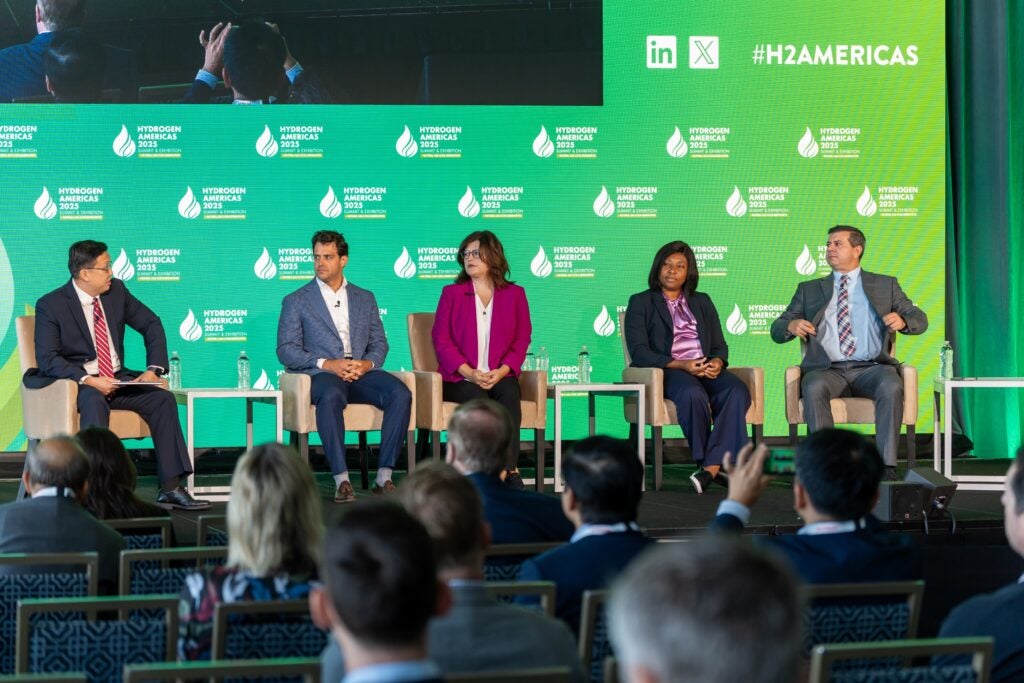The stakes are high for low-carbon hydrogen
- For blue hydrogen to be truly better for the climate than the fossil fuels it is intending to replace, three conditions must be met: high carbon capture rates and permanent storage; low upstream methane emissions and low hydrogen losses.
- A vacuum in federal leadership demands accountability by industry and investors, resisting rollbacks that harm the credibility of the hydrogen industry and committing to transparency.
Meeting global decarbonization goals requires scaling up cleaner molecules to replace unabated fossil fuels. Clean hydrogen isn’t a ‘nice-to-have’; it is essential where electrification isn’t practical, and to maintaining U.S. competitiveness in global energy markets. But today’s fast-shifting political and market landscape is reshaping hydrogen’s prospects. The choices made now will determine whether hydrogen accelerates climate progress or locks in false solutions. So how can the U.S. ensure that billions in public and private investments deliver truly clean hydrogen with real climate benefits?
The stakes are high for low-carbon hydrogen Share on XThe U.S.45V Clean Hydrogen Production tax credit, once devised to be the harbinger of green hydrogen, has been reshaped in ways that privilege blue hydrogen. This is a significant shift away from the original intention of this tax incentive — to support and encourage growth of the cleanest energy solutions that the global market demands.
The outlook is sobering: Over 75% of U.S. green hydrogen projects may not qualify for intended incentives (Wood Mackenzie); and by 2050, less than 1% of U.S. hydrogen will be renewable, despite an 80% production increase (EIA).
Blue hydrogen is now positioned to capture much of the 45V credit, and limitations in the statute and its implementing regulations mean that qualifying for the credit does not necessarily ensure taxpayers are getting the most climate bang for their buck. For blue hydrogen to be truly better for the climate than the fossil fuels it is intending to replace, three conditions — which aren’t fully addressed in the rules of the tax credit — must be met: high carbon capture rates and permanent storage; low upstream methane emissions and low hydrogen losses.
Let me illustrate why these three conditions really matter: capturing only 60% of carbon rather than 90% can reduce hydrogen’s climate benefit over natural gas by more than 50% for industrial heat. If methane and hydrogen losses are also high, blue hydrogen could end up worse for the climate than the fossil fuels it’s replacing.
Missing capture rate targets has drastic impacts on the relative climate benefit of switching to hydrogen. For example, even where methane and hydrogen emissions are tightly controlled, if carbon capture is low, blue hydrogen loses more than 50% of its relative benefit over natural gas for industrial heat.
Carbon capture and storage must be credible
Everyone agrees that addressing the carbon from hydrogen production is essential, but the complexity of actually getting to “low-carbon” blue hydrogen is often meaningfully underestimated. Global standards and guidelines broadly agree on a target of 90-95% capture, and while industry claims it is able to meet this standard, it has yet to be demonstrated consistently on operating blue hydrogen facilities. What’s more, captured carbon must be safely transported and permanently stored, which is also complex, costly and often controversial. These additional infrastructure projects come with their own challenges, including public acceptance, permitting and construction timelines.
A successful blue hydrogen industry requires a credible and fully operational carbon management value chain from capture to sequestration. Without it, the low-carbon label is misleading at best. Carbon management failures from pipeline leaks to storage-induced earthquakes can also impact the blue hydrogen industry, and more attention must be paid to ensuring this piece of the puzzle is deployed safely and with environmental integrity.
Methane emissions must be minimized
Blue hydrogen’s hopes also hinge on managing upstream methane emissions. In the U.S., methane leak rates can vary from less than 1% to more than 8% in certain basins. Yet the latest changes to 45V from DOE make it easier to mask this problem by allowing companies to choose from either an artificially low leak rate or their own bespoke value — based on self-reported data — all but eliminating a regulatory incentive to meaningfully reduce methane emissions in the blue hydrogen value chain.
Rather than a “race to the bottom,” in which companies are incentivized to cherry pick data to qualify for the best tax credit, this should create a moment of opportunity for corporate leadership. Members of the Oil & Gas Methane Partnership 2.0 have already committed to a methane leakage rate of no more than 0.2% in their oil and gas operations. There is no reason why hydrogen companies shouldn’t commit to similar ambition — and OGMP members must lead the way in establishing accountability mechanisms, such as Level 5 site- and source- specific verification.
Hydrogen emissions must be prevented
Scientific consensus is clear: losses of hydrogen itself — no matter how clean — can reduce the benefits of deploying hydrogen systems for the climate. Every 1% of hydrogen released into the atmosphere (through operational practices or fugitive emissions) undermines climate benefits by 3% in the near term and roughly 1.5% in the long term. Current loss estimates for hydrogen are highly variable, by as much as 100-fold, and tools that can detect hydrogen at the quantities necessary to avoid climate-relevant impacts are currently limited.
But this is changing. Together with industry and academics, EDF recently launched a new major research initiative aimed at filling some of these key data and knowledge gaps. And even as we learn more, the hydrogen industry can and should commit to using all available tools to limit hydrogen losses — both for safety and for climate. Certain geographies like the UK are taking the lead and already requiring companies to put these practices into effect.
Transparency is the foundation of clean hydrogen
For hydrogen to succeed in the U.S., and globally, it must be underpinned by trust and transparency — particularly as billions of dollars in public funds are being invested for its intended benefits. Without credible data and oversight, U.S. hydrogen risks losing trust at home and competitiveness abroad. From small changes in the GREET model (the methodology to calculate greenhouse gas emissions for hydrogen production facilities, for the purpose of determining eligibility and credit levels under the 45V Clean Hydrogen Production Tax Credit) to drastic changes like Environmental Protection Agency’s reported effort to dismantle the Greenhouse Gas Reporting Program, transparent verification and validation systems in the U.S. are at serious risk — what is at stake is the market value of U.S produced hydrogen abroad, where expectations are high.
A vacuum in federal leadership demands accountability by industry and investors, resisting rollbacks that harm the credibility of the industry and committing to transparency. Anything less risks a stark future where clean hydrogen is clean in name only. The stakes are clear: only by ensuring credibility, transparency and climate integrity can hydrogen fulfil its promise.











